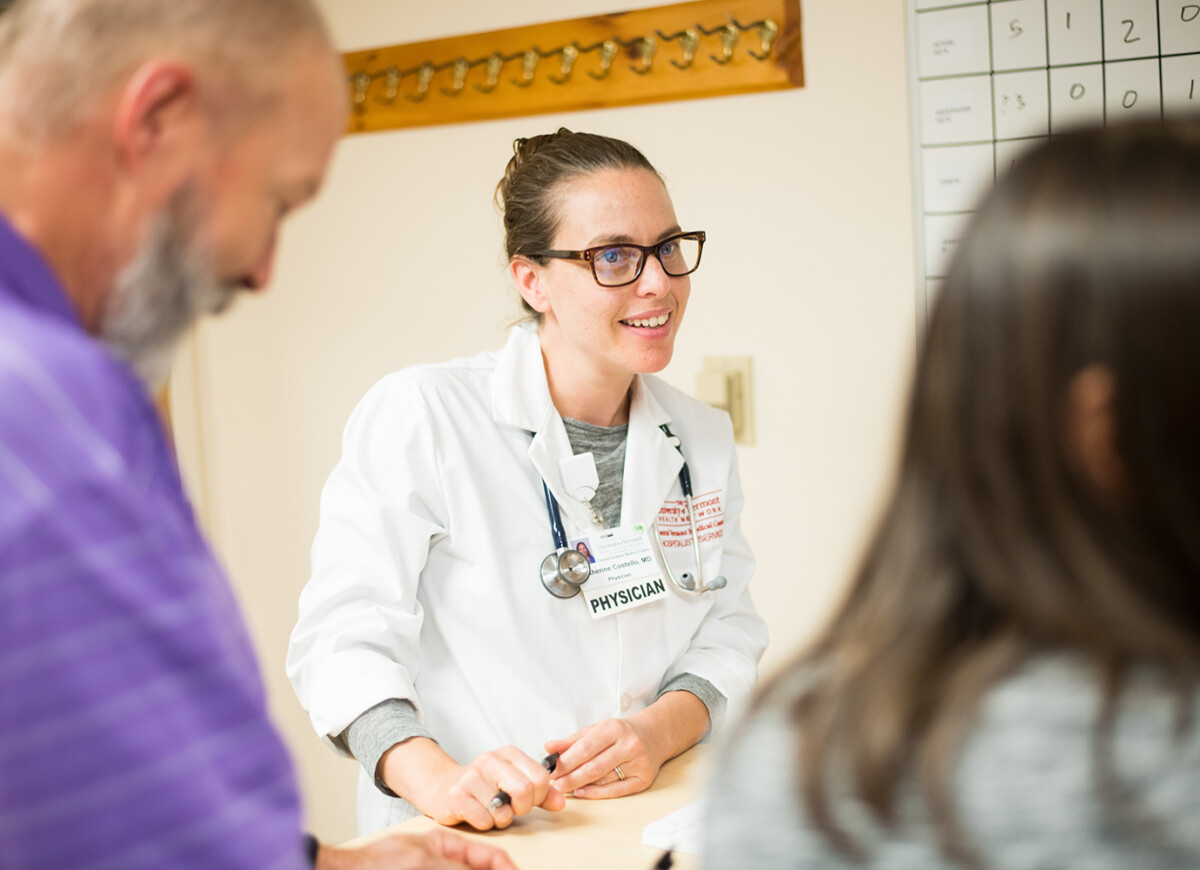Physician Recruitment Reboot

Doctors are among the most recognizable professionals. Everyone knows what a long white coat and stethoscope mean. It’s a job many children aspire to and adults respect, and it’s long been a potent source of inspiration in our society. Despite this visibility, it has become increasingly difficult for health care organizations across the country to recruit enough of these highly-trained medical practitioners to meet the needs of their communities. This shortage is fueled by rapidly increased patient demand, the effects of the pandemic and an overall lack of medical school physician graduates in the pipeline.
The University of Vermont Health Network is meeting this challenge head on by adapting its strategy for attracting physicians to the demands of the moment. Perhaps surprisingly, this means focusing at least as much on the future as the present. “Physician workforce planning is the key; it all starts there,” says Chris Corde, a Special Project Leader for Network Operations, Provider Recruitment, with over 20 years of recruitment experience.
You need to be thinking two to five years out and you need understand where you’re at risk with retirements.
Chris Corde
Looking Ahead
To aid in planning efforts, Corde has been working to collect and use data to better understand our current workforce and forecast how trends will develop, focusing on clinical areas where patients are experiencing access issues and preempting other organizations that could lure away talent.
This forward thinking approach extends beyond using data to plan ahead. It also includes attracting younger doctors and helping them to develop their careers in our region. That is why retaining residents – physicians who are completing their medical training at our health system – is so important.
Roughly 25% of our residency graduates chose to remain and practice at the UVM Health Network between 2018 and 2022, either as fellows or as attending physicians. In the area of primary care, Family Medicine has had an even better success rate, thirty seven percent over the past six years. Of the most recent graduating class, 3 of the 6 remained at the health system. And in Urology, a program that graduates only one resident per year, three graduates have been retained over the past seven years, two directly from their residency program and one who returned following a fellowship at Duke University.
The Family Medicine Residency program established at The University of Vermont Health Network – Champlain Valley Physicians Hospital (CVPH) in 2013 has a similar objective, with the added benefit that it directly helps improve regional access to primary care physicians in northern New York, a rural area where recruitment can be especially difficult. Of the five residents who graduated from the program 2023, two have chosen to remain in the area to practice medicine. “To date, we have graduated 24 residents and 60% have decided to stay in the region,” explains Marianna Worczak, MD, the residency program director. “Our retention rate of graduates speaks volumes for what our program, and other rural residency programs, can do to recruit doctors to areas like the North Country and Northern Vermont.”
Opportunities and Challenges Create Vacancies
At the moment, adopting a more aggressive recruitment strategy has contributed to an overall growth in physician job openings. In addition to addressing immediate staffing vacancies, long-term workforce planning to anticipate needs and increase patient access to care has opened new opportunities where they did not exist before. Other less positive factors have also contributed to the growth in openings. The enormous burden clinical health care staff assumed during the pandemic has continued to have ripple effects, including stress-related burnout and early retirements.
There are signs, however, that the bright spots are beginning to emerge, even if national shortages are likely to remain a persistent issue. The shortfall of anesthesiologists is particularly severe, but we have seven new anesthesiologists slated to start at the health system between August 2023 and January 2024 and a half dozen more being interviewed for potential jobs.
The Emergency Department is another area where progress is being made. Since Ramsey Herrington, MD, the Chair of the Department of Emergency Medicine, took over in 2017, the number of Emergency Department physicians who hold faculty positions at the Larner College of Medicine, where they serve as teachers and researchers furthering the health system’s academic mission, has grown from 17 to nearly 60. The majority of these new additions work at multiple health care partner organizations, which has helped alleviate shortages outside of the Burlington area. A number of other physicians have joined the staff, too. 5 new non-academic doctors were recruited to the Emergency Department between June 2020 and June 2023, which represents a roughly seventeen percent increase.
The aim of shifting to a more aggressive recruitment strategy is, ultimately, to have both an immediate effect and to start a process that will grow, expand and strengthen over time. “Recruitment is really about momentum,” says Bradley Krompf, the Executive Director of The UVM Health Network Medical Group.
When we recruit a new physician, we do our best to hire people who want to be part of the UVMHN experience for the long-term. It is important to realize everyone on some level is a recruiter and wanting to be part of building a better future is something we all strive to do.
Bradley Krompf
Building for the future, he points out, isn’t just a matter of numbers. It’s about building a culture of respect, equity and transparency that draws talent by letting the Health Network’s virtues as a premier academic health system shine.
